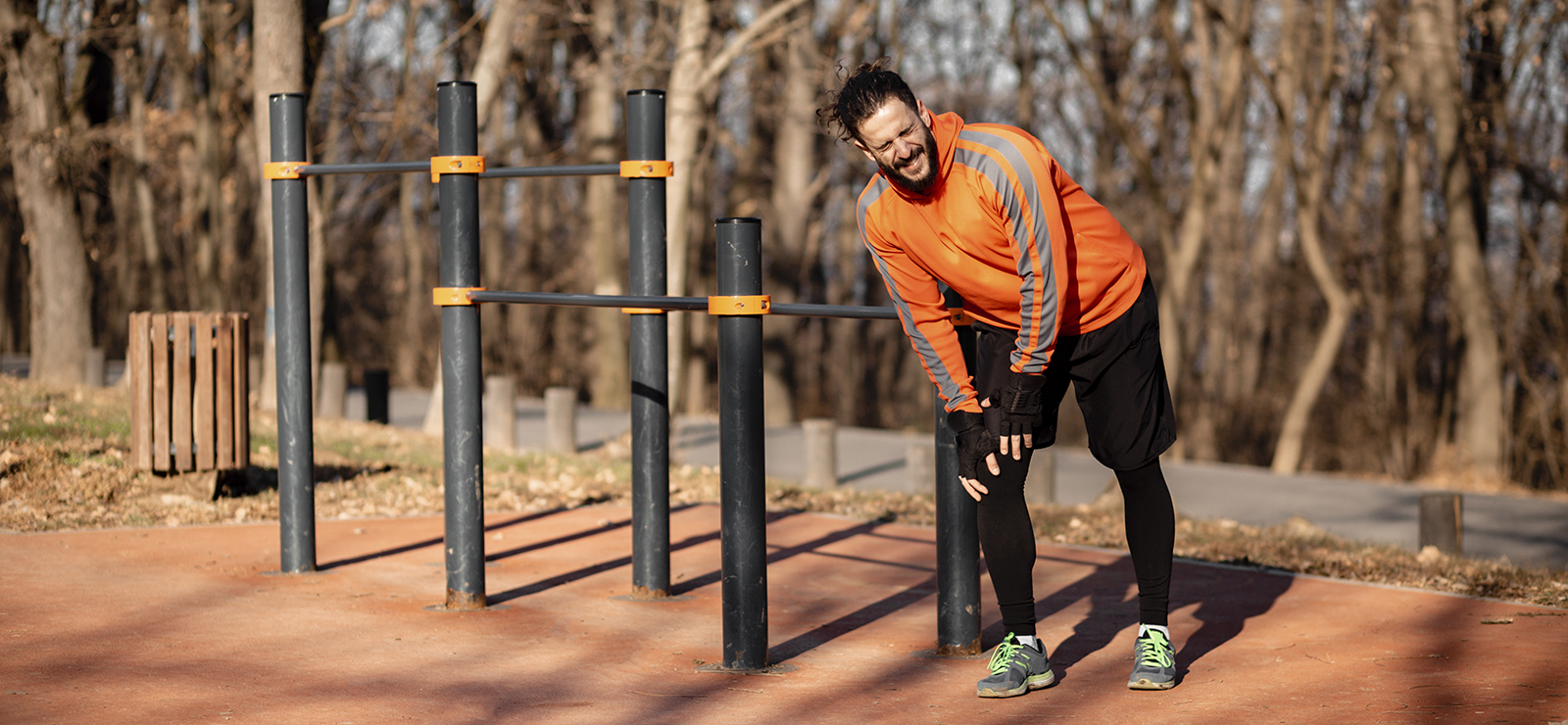March 20, 2023

Joint pain and arthritis affect millions of people in the United States. But if you think those conditions only strike after age 50, you may need to think again.

“When you get into your 30s and 40s, there’s often enough cumulative wear and tear on the joints that you might start feeling aches and pains,” says Dr. Steven DeFroda, orthopaedic surgeon and sports medicine specialist at MU Health Care. “There’s no set age that you’ll just wake up with joint pain. But you might find you’re noticing your joints more than you did when you were a kid.”
The good news is that age-related joint pain doesn’t have to sideline you. And if you take measures to protect your joints, you just might be able to keep aches and pains at bay.
What Happens to Joints as We Age
As you age, your joints start to deteriorate from repetitive movement. Cartilage — the tissue that lines the joints and allows them to move smoothly — does not regenerate or regrow, so natural wear and tear accumulates over time. Joints don’t move or feel as they should without the smooth cushion of cartilage.
In addition, as you enter your 30s and 40s — and are busy with your career and family — it’s common for physical activity to decrease and weight to increase. The combination puts additional stress on your joints. The first joints to have issues, adds Dr. DeFroda, tend to be in your bottom half. They carry the most weight and endure more repetitive movement than other joints.
“Cartilage can start to fray, become swollen or not stay as smooth as it was when we were children,” Dr. DeFroda says. “The natural aging process and cumulative stress on your joints starts causing pain.” The deterioration can eventually lead to osteoarthritis (OA) — the most common form of arthritis.
Risk Factors for Osteoarthritis
OA, also called degenerative joint disease or “wear and tear” arthritis, happens in stages and only affects the joints. But depending on other factors, including your anatomy or prior activity level, you may see the effects of wear and tear at a younger age.
Other things that increase your risk of developing OA sooner than later include:
- Age: The risk increases with every year.
- Being overweight or having obesity: Extra weight stresses joints and cartilage.
- Gender: After age 50, women are more likely to develop OA than men.
- Inflammatory or autoimmune conditions: Inflammation can play a role in developing OA.
- Prior joint injury: Previous joint damage is a leading cause of OA in younger adults.
- Repetitive activities and overuse: Repeated movements accelerate wear and tear.
“If you’re an avid knitter or someone who works with their hands a lot, you can experience arthritis in your hands at a faster rate,” Dr. DeFroda says. “The joints that have been injured or get used the most are the most likely to deteriorate first.”
Most of the risk factors are out of your control. But a few, such as weight and activity, can be altered with lifestyle changes.
What to Do if You Have Joint Pain
Wear and tear on joints typically build up slowly. But if your pain and discomfort come on quickly, you need to make sure there isn’t a more acute issue causing your symptoms.
“Arthritis isn’t dangerous,” says Dr. DeFroda. “You may hear clicking or popping in your joints; that’s common and not concerning as long as it’s not painful.” If you’re feeling a sharp pain, your problem may be more severe than mild arthritis.
Signs of a more serious joint issue include:
- Pain that isn’t in proportion to the activity you’re doing
- Sudden loss of motion or inability to fully bend or straighten that part of your body
- Swelling, which is a sign of inflammation
For mild-to-moderate aches and pains, visit your primary care provider (PCP) for a baseline assessment. They’ll also consider all aspects of your health to ensure there isn’t a systemic condition, something that impacts the entire body versus a single joint, causing the symptoms.
“A lot of mild, age-related aches and pains are caused by muscular imbalances,” Dr. DeFroda says. “Physical therapy or even more holistic approaches like chiropractic care or acupuncture can be fantastic in those cases.” But for more severe joint degeneration, your PCP may refer you to a joint specialist.
To relieve mild to moderate flare-ups and discomfort, the Arthritis Foundation recommends:
- Apply ice to the painful joint for 15 minutes, two to three times a day
- Rest the joint and avoid activities that may aggravate it
- Take over-the-counter pain relievers to reduce inflammation
- Use heat from a heating pad, hot shower or bath to alleviate muscle spasms
How to Protect Your Joints
It’s never too late to be proactive about protecting your joints. And the younger you are, the more impactful your actions will be toward long-term joint health. For healthy joints, Dr. DeFroda suggests you:
- Get regular cardiovascular exercise: Low-impact physical activity flushes out inflammation and keeps joints moving.
- Improve flexibility: Yoga and stretching help improve the range of motion for joints.
- Maintain a healthy weight: Every pound of excess body weight puts five pounds of pressure on your knees.
- Strength train: Strengthening your core and the muscles above and below major joints will help to stabilize them. Using low weight and higher repetitions helps to maintain good form.
“When it comes to your joints, a healthy lifestyle cannot be understated,” Dr. DeFroda says. “Eating a balanced diet, maintaining a healthy weight and staying physically fit all go a long way in protecting your joints.”
Next Steps and Useful Resources
- Want to baseline assessment with a primary care provider? Find one today.
- Want to learn more about joint pain? Read more.
- Dr. DeFroda is one of the official team physicians for Mizzou Athletics. Learn more about the partnership.


